Robot Mowers and Hedgehogs: How to Protect Them from Danger?
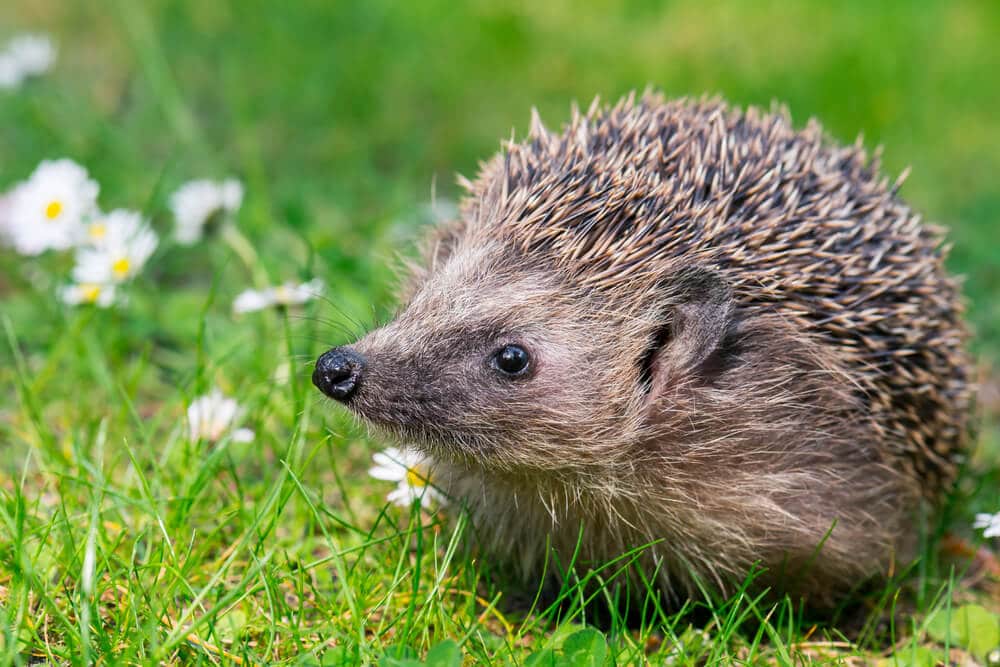
Robot mowers pose a danger to hedgehogs, and we are here to shed light on this issue. © Shutterstock
The issue of robot mowers and hedgehogs often ends tragically. When not used properly, robot lawn mowers pose a danger to hedgehogs, and fatal accidents and serious injuries are almost commonplace. Robotic mowers are increasingly being referred to as “hedgehog killers,” which we think is somewhat overly dramatic, since the responsibility still lies with their owners. However, animal welfare advocates rightly warn of the dangers and seek to educate people on how to protect hedgehogs. Why do accidents with these little creatures occur more and more frequently? And how can you operate a robot mower without endangering hedgehogs? We also want to help prevent such accidents and promote a hedgehog-friendly environment.
We reported on the issue of hedgehogs and robot mowers and actively advocated for biodiversity a while ago. Unfortunately, the situation has hardly improved, even though there is some hope on the horizon. When using a robotic lawn mower, there are several important rules to follow to operate it safely. Additionally, there are extra measures that can contribute to protecting hedgehogs.
Are there differences between models from Gardena, Worx, or Husqvarna? Which robot lawnmowers are particularly animal-friendly? In this article, we will comprehensively inform you about this issue and provide useful tips for using robot mowers.
Why are robotic mowers a danger to hedgehogs?
We are currently living in a time of great species loss – especially insects are threatened by our modern conventional agriculture. At this point, however, we would rather not make any accusations or comparisons, but rather work constructively towards improving the situation. The big problems of our time must always be seen in a holistic context and addressed by each individual.
For the hedgehog, which mainly feeds on insects or snails and is not a vegetarian, this situation of insect loss often leads to an acute shortage of food. Not only does it find less and less food in more and more “brochure gardens” with one-sided monocultures, but it is also now threatened by robotic mowers. Gardens should be an important part of biodiversity and a departure from “English gardens” should take place. With less food, hedgehogs and especially their young may also be out and about during the day, but this is rare. Private gardens in our modern world are generally one of the last havens for hedgehogs, where they should definitely not be driven away.
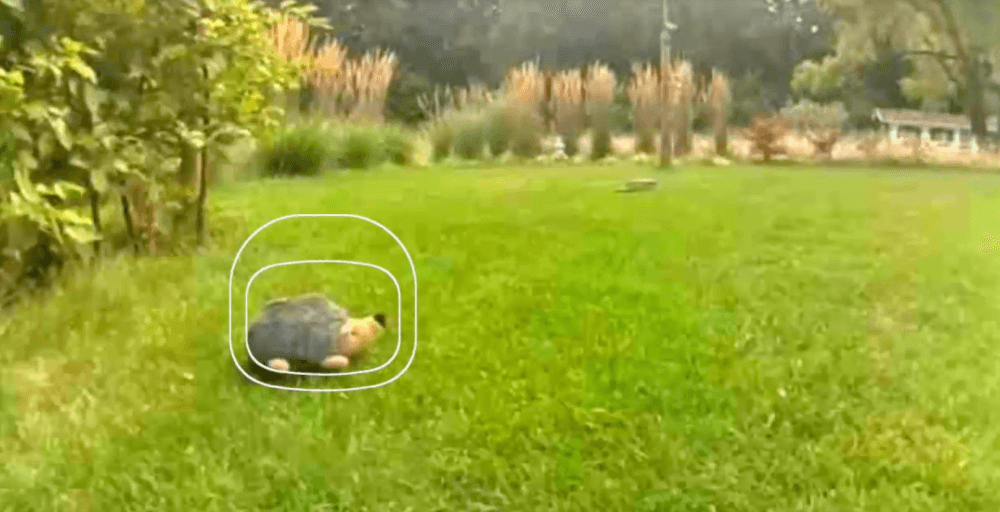
Modern camera technology can detect hedgehogs early, before it’s too late. Source: EEVE Willow
But why exactly is a robot lawn mower dangerous to hedgehogs? The general causes that lead to this problem lie on both sides. Previous generations of robotic mowers cannot reliably detect small animals or obstacles. They are often equipped only with collision sensors that cannot recognize an obstacle in advance and therefore cannot avoid it. An incline sensor that is also installed frequently reacts too late.
Regarding hedgehogs, tragically, their natural behavior in danger is not flight, but rather rolling up into a ball and waiting it out. However, a robot mower is unfortunately not deterred by their spines, which leads to accidents. Hedgehogs are typically seriously injured, sometimes fatally. Moreover, injured animals are sometimes not even found because, if they can still move, they quickly withdraw and may silently perish. This must be prevented, especially since hedgehogs are considered a particularly protected species according to the Federal Species Protection Ordinance and are on the warning list for endangered animal species in many federal states.
What measures can be taken for hedgehog protection?
All of this is reason enough to actively advocate for the protection of hedgehogs and other animals, and not to neglect one’s own responsibility when using robot mowers.
The most important tips for using robotic mowers that are safe for hedgehogs:
- Mow during the day: Do not mow during dusk, evening hours or at night to protect nocturnal animals like hedgehogs. Choose a higher surface performance so that this is not necessary at all. Only mow when necessary.
- Check the garden: Regularly search your garden for hedgehogs and other animals. In particular, areas that are not visible, hedges, bushes, leaf piles, and edge strips should be checked. In August and September, special attention should also be paid to hedgehog young, who are considered particularly vulnerable.
- Supervision: Never let your robot mower work completely unsupervised. Especially not when children or pets are on the lawn or when wild animals have been sighted in the area.
- Protective devices: Attach an additional protection to the front of your robot lawn mower to prevent it from running over animals. Examples can be found here.
- Retreat areas: Exclude areas of the garden from mowing to allow for flower meadows to grow and to provide a retreat for animals. This promotes biodiversity, which is essential nowadays. In addition to birds and hedgehogs, bees, bumblebees, butterflies, and other insects should also have a chance in every garden.
- Types of blades: Robotic mowers with freewheeling centrifugal blades can cause significantly less damage than those with fixed blades. When purchasing, look for such models. In general, the cutting height should be around 6 cm.
- New models: Preferably use a new, smart generation of robotic lawnmowers with advanced camera technology and artificial intelligence for improved obstacle detection. An overview of such models can be found here or here. Alternatively, we have listed animal-friendly robotic lawn mowers further down.
However, hedgehogs are by no means exclusively victims of robot lawn mowers; other garden tools such as hedge trimmers, brush cutters, or grass trimmers are also a great danger. The above rules and tips should therefore be understood as general advice for hedgehog protection. This will also protect other animals that can be endangered by robotic lawn mowers. These include, besides young birds, many invertebrates, as well as many amphibian and reptile species.
We always recommend leaving some areas in your garden completely to nature and excluding them from the mowing process, at least temporarily. Such flower meadows are especially important for insects, particularly in the spring, and therefore for animals that rely on them as a food source, such as birds or hedgehogs. A study by the German University of Hohenheim in cooperation with Stihl has also shown that under certain conditions, using a robot mower can actually increase biodiversity compared to a traditional push mower with a grass catcher. At the very least, robotic mowers do not restrict biodiversity any more than traditional mowers. Flowering areas and wild plants should be consciously tolerated, and the cutting height of the robot lawn mowers should be set to about 6 cm. If you’re looking for a more natural look in your yard, you might consider using a robot lawn mower without perimeter wire to allow for more flexibility in the mowing process.
New Generation: Which Robot Lawn Mowers are Animal-Friendly and Safer?
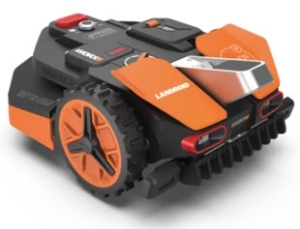
However, the new generation of robotic mowers with intelligent navigation is a ray of hope for hedgehog protection. They typically work with a variety of sensors. Modern camera technology and artificial intelligence, in particular, can detect obstacles much earlier and more reliably than previous ultrasound sensors. This means that animals and humans can be avoided, or the work can be stopped temporarily. The robot mower is gradually becoming the long-awaited smart garden helper that no longer poses any danger in its previous form. Especially robot mowers without perimeter wire belong to this upcoming, smart generation. In the following video, you can see object avoidance or obstacle detection in a modern robot lawn mower using camera technology and artificial intelligence. You can learn more about this model here.
Video: Obstacle Detection Using Modern Camera Technology
Is there an official review for robot mower safety?
Yes, there have already been several investigations by the German non-profit consumer organization Stiftung Warentest regarding robot mower safety. In the robotic mower review from 2020 investigates this topic. Unfortunately, almost all models performed poorly in this test. Safety, in general, was described as in need of improvement and critical in the test. Therefore, we urgently remind you never to let a robotic lawn mower of the tested generation work completely unsupervised – especially when children or animals are nearby.
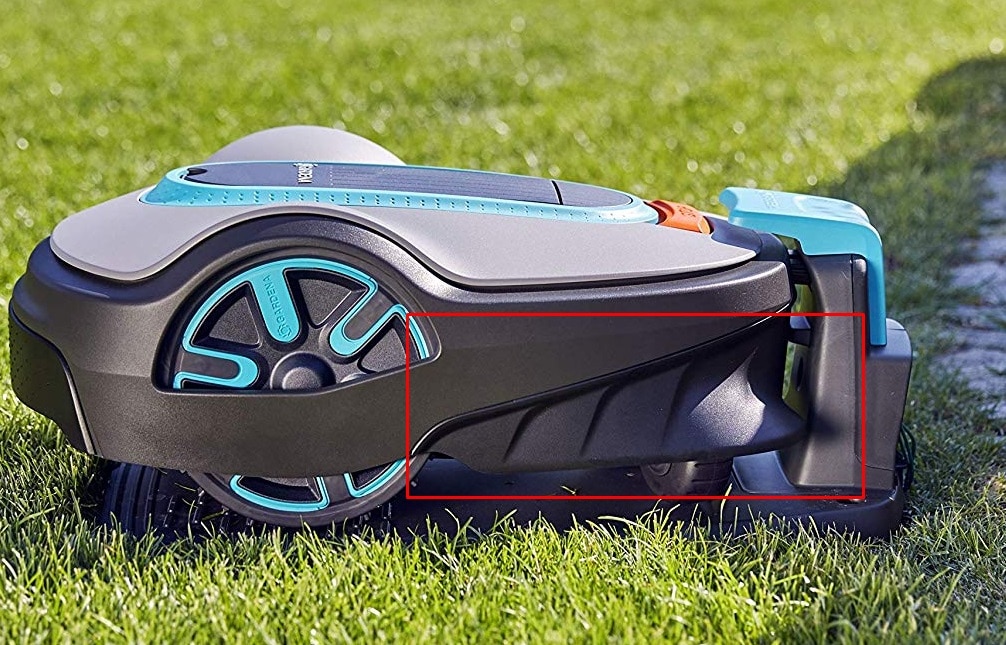
Gardena Sileno Life: Highly Sensitive Collision Sensor & Optimized Front for High Safety
Even in April 2022, Stiftung Warentest judged robotic mowers as “not working by just setting them up in the garden and starting them.” The advertising promise of manufacturers of a fully automated maintained lawn is only a promise and should be enjoyed with caution in the current generation. Although robotic mowers are still a great time and labor-saving device, you should not forget the above rules or tips.
Which robot mowers are safe for hedgehogs and other animals?
A study by researchers from Aalborg University and the University of Oxford, which used deceased hedgehogs, showed a similarly devastating picture. Most of the 18 tested devices could not recognize hedgehog corpses as obstacles and drove over them. However, free-swinging blades performed much better than fixed blades and caused less damage.
- blue = Run over: no injury due to the hedgehog being too small
- green = Bump: direction changed
- yellow = Rough bump: no contact with the blade
- orange = Run over: possibly cut quills, possibly bruises
- red = Run over: light to severe injuries
However, some models from the Husqvarna group, which includes Gardena, performed well in this study. The graphic prepared by igelzentrum.ch for this test proves that some robot lawnmowers have the potential to not cause serious injuries. The Gardena Sileno Life and Husqvarna Automower 305 are good examples of this.
The following models did not cause serious injuries in the review:
- Gardena Sileno Life
- Gardena Sileno City
- Husqvarna Automower 305
- Worx Landroid M (WR143E)
- Honda Miimo HRM 40 Live
With the new generation of smart robot lawn mowers, the situation is fortunately much better overall, even though the same rules generally apply. Significant progress has been made in obstacle detection through camera technology and artificial intelligence.
FAQ – Protecting hedgehogs from robotic lawn mowers
Conclusion: Actively help protect hedgehogs and make your garden hedgehog-friendly
When using robotic mowers, there are some fundamental and essential rules to follow. Everyone should be aware of their responsibility and take appropriate measures. An absolute no-go is to run the mower during dusk, evening hours, or even at night. For this, you should choose a model with about a third higher cutting capacity. Additional protection on the front of the robot lawn mower can also help. We are excited to see the first official tests of the new smart generation of robotic mowers. Until then, we recommend the models mentioned above, which have performed better in safety tests. We will keep you updated and recommend that you take a look at new robotic mowers or models without a perimeter wire.



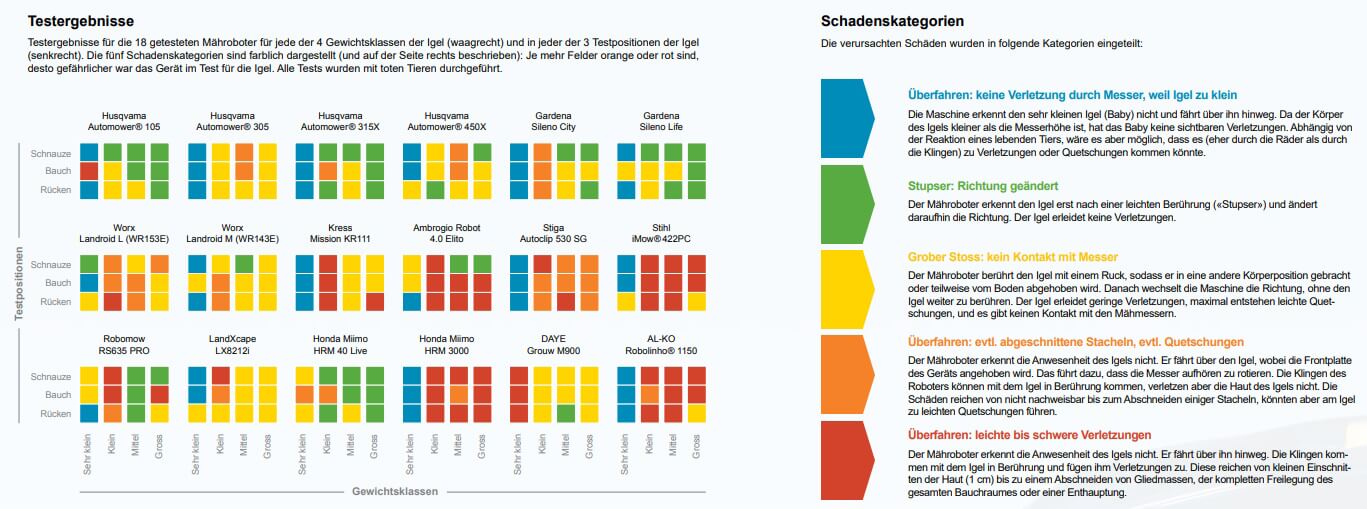
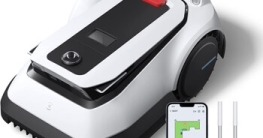
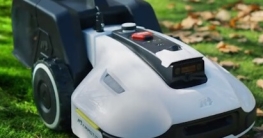
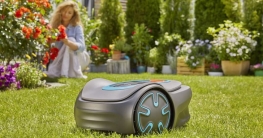
Comments
Thieu 26. January 2024 at 11:33
the new human detection called mmwave sensors, just cost just a few euros each. A lab could easily test which wave sensor frequency detects a hedgehog. You probably have better sources than I have to have this figured out.
robot-lawn-mower.net 4. March 2024 at 23:10
Hey Thieu, thanks for your comment – robot lawn mowers use different technics to detect hedgehogs and other animals. Modern models use several technics at once to avoid obstacles and be safer for animals. Being a risk for hedgehogs will hopefully be part of the past very soon. Here you will find more information about modern robotic mowers: https://robot-lawn-mower.net/without-perimeter-wire/